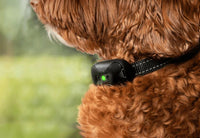Subtotal
$0.00
or
It is an alarming fact to think that, when you consider how many dog owners exist within the contiguous United States and that the average household has two or more dogs, that there is no national registry of sorts that one can go to see just how many dogs and cats go missing every year. As it stands for now, this type of data can mainly be found in pieces only through local shelter statistics, but I think we all know that this is a very big problem and one worth getting a broader understanding of.
There are roughly 13,600 community animal shelters nationwide with approximately 7.6 million animals entering these shelters every year. An estimated 3.9 million are dogs and 3.4 million are cats. As far as how many dogs and cats per household goes, some of the latest figures has that number somewhere around 60-70 million pet owners nationwide. The unfortunate side of these figures is that out of the number of pets that did find their way to a shelter only about 650,000 were actually returned to their owners.
As a result of these numbers, across the board, should any of us be surprised that companies within the pet industry are churning out various types of GPS collars to give pet owners a realistic option in finding their furry family members before they end up in a shelter. What is surprising is when we think how long GPS technology has been around, which puts a date somewhere around the early 1970's, and why it took so long to use this technology in such a useful and beneficial way. Either way, the technology is here and does not appear to be going anywhere anytime soon.
In addition to the GPS collar there is another type of technology out there that at times is often be misunderstood insofar as exactly how it works in finding your dog; the microchip. This is a great idea and does have real world value, however unlike the GPS collar the microchip will not help you find your dog it only works if a shelter rep or Vet gets your dog and then subsequently scans the animal for a chip. In other words the dog or cat actually has to be found in order for it to have any benefit for the bereft pet owner.
This is certainly becoming a “Brave New World” as pets are becoming more and more connected with their respective owners. I think this is a good thing as long as these products and the businesses that produce and sell them understand the delicate balance between too much technologies and not to lose sight of the one salient fact that any dog owner knows and wants, please just return my furry family member home safely.

How to Keep Racoons, Skunks, and Squirrels Away - Without Traps or Poison

Why Dogs Shouldn't Eat Turkey: What Every Pet Owner Should Know

You love your dog—but the constant barking every time someone walks past the fence? Not so much.

Handheld Bark Control vs. Collars | Best Dog Barking Deterrent Devices

10 Fun Pet Costume Ideas (and How to Keep Pets Comfortable)